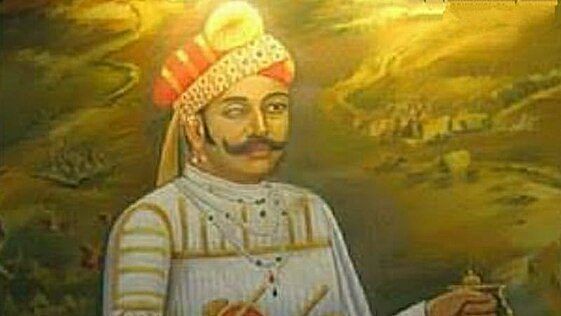Thank you dear subscribers, we are overwhelmed with your response.
Your Turn is a unique section from ThePrint featuring points of view from its subscribers. If you are a subscriber, have a point of view, please send it to us. If not, do subscribe here: https://theprint.in/subscribe/
Rana Sangram Singh, famously known as Rana Sanga, was one of the most heroic figures in Indian history. As the ruler of Mewar from the Sisodia Rajput dynasty, he united the Rajput states and stood as the strongest opponent of foreign rulers like the Delhi Sultanate and the Mughals. His bravery, statesmanship, and dedication to Rajput unity made him a legendary warrior-king.
Born around 1482 CE, Rana Sanga was the son of Rana Raimal, ruler of Mewar. He had to fight a brutal succession battle against his brothers. In the process, he lost one arm and an eye. Despite these injuries, he emerged victorious and ascended the throne in 1508 CE. His physical scars only strengthened his resolve to protect and expand his kingdom.
Under Rana Sanga, Mewar rose to prominence as the most powerful Hindu kingdom in North India. His territory expanded beyond Rajasthan into parts of Madhya Pradesh, Gujarat, and even Uttar Pradesh. His capital at Chittorgarh became a symbol of Rajput pride and resistance.
Major Military Campaigns:
- Battle of Gagron (1519)
– Defeated Mahmud Khilji II of Malwa and captured him.
– Released him later, showcasing his Rajput code of honor. - Campaigns in Gujarat and Malwa
– Fought successful battles against the Gujarat Sultanate.
– Controlled key regions, increasing Mewar’s influence. - Rajput Confederacy
– United more than 20 Rajput states under his leadership.
– Became the symbolic head of Hindu resistance and earned the title ‘Hindupat’ (Lord of Hindus).
The Battle of Khanwa (1527):
Rana Sangha’s biggest challenge came when he faced Babur, who had just established Mughal rule by defeating Ibrahim Lodi at Panipat. To stop the Mughal advance, Sanga raised a massive army of over 80,000 Rajputs and Afghan allies, including Mahmud Lodi.
The battle was fought near Agra at Khanwa on March 17, 1527. Despite his large force, Rana Sanga was defeated. Babur’s use of artillery, superior battlefield strategy, and the betrayal of Sanga by his ally Silhadi of Raisen turned the tide in Babur’s favor.
Rana Sanga was seriously injured in the battle but managed to survive and escape.
Final Days and Death:
Even after his defeat, Rana Sanga began regrouping for another confrontation with Babur. However, he was allegedly poisoned by his own nobles, who feared further destruction. He died in 1528 CE, marking the end of the last major Rajput effort to stop the Mughals.
Legacy:
– Wounded but Undeterred: Fought over 100 battles despite losing an eye and an arm.
– A Noble Warrior: Treated defeated enemies with dignity and upheld Rajput traditions.
– Inspirational Leader: Inspired later freedom fighters like Maharana Pratap.
– Symbol of Unity: Known for bringing together warring Rajput clans against a common enemy.
Rana Sanga’s story continues to be sung in folk songs and remembered as a shining chapter in Indian history. Statues and memorials in Rajasthan stand in tribute to his courage.
Conclusion:
Rana Sanga was not just a king—he was a movement. He represented hope, unity, and resistance in an era of chaos and foreign domination. Even in defeat, he stood taller than many victors. His legacy of courage and sacrifice lives on in the heart of India.
Rana Sanga was also known for his diplomatic acumen. He forged alliances not just within Rajputana but also extended support to Afghan leaders like Mahmud Lodi in their fight against the Mughals. His vision was to restore native rule across North India.
It is said that Rana Sanga bore eighty wounds on his body—a testament to his bravery and the countless battles he fought. These injuries became symbols of honor among his people. His court was known for promoting warrior ethics, Rajput art, and cultural pride.
Apart from warfare, Rana Sanga also invested in strengthening the administration of Mewar. He focused on fortifying key cities like Chittorgarh and ensuring fair governance to maintain unity among the Rajput states.
These pieces are being published as they have been received – they have not been edited/fact-checked by ThePrint.


